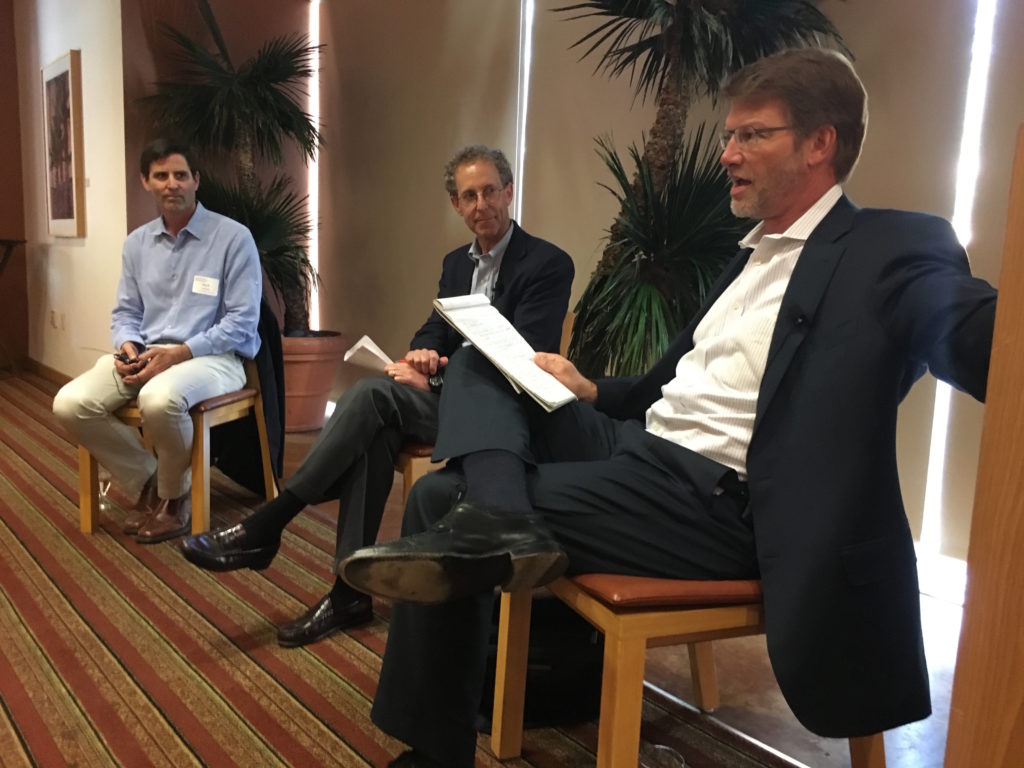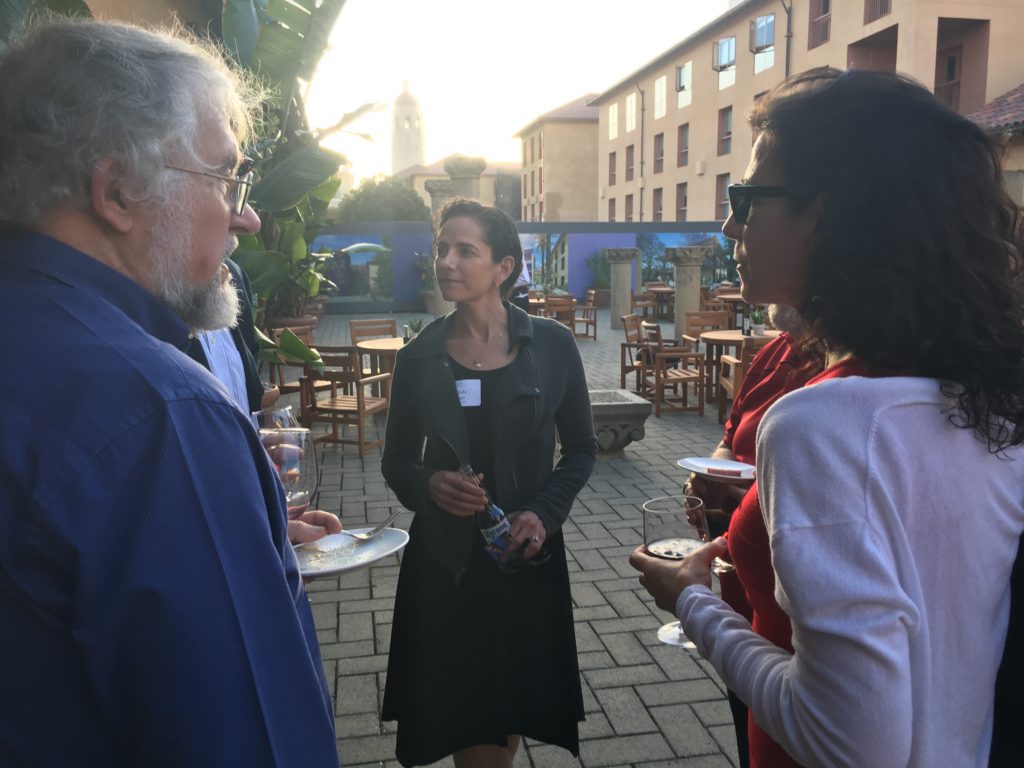Green v. Green: A Debate on the Future of U.S. Renewables
Can the US power itself with 100% renewable energy – and make the change fast enough to avert the worst effects of climate change? With the United States’ current portfolio of technology and policy solutions, what is the most likely path to get us to a low-carbon economy as fast as possible and what are the financial realities of making this transition?

To help sort out these details, Stanford’s Steyer-Taylor Center for Energy Policy & Finance and Stanford Professionals in Energy recently invited Mark Z. Jacobson, Professor of Civil and Environmental Engineering and Director of Stanford’s Atmosphere/Energy Program, to engage in a friendly debate with Stanford Business School lecturer and clean energy financier Jeffrey D. Brown. Moderating the “Green vs. Green” debate was Steyer-Taylor Center Executive Director Dan Reicher, who was quick to acknowledge the similarities between the two speakers. “Mark and Jeff agree on our zero-carbon ends,” he said. “Where they differ is on the means.”

Jacobson’s presentation included a synopsis of findings from his Solutions Project, which has calculated the exact mix of wind, water, and solar energy available to power each of the fifty United States with 100% renewable energy. “We looked at the current energy infrastructure and usage,” he explained, “and it turns out you can reduce power demand worldwide 32% just with electrification. Then you can squeeze out another 8% with energy efficiency improvements.” The resulting demand, he argued, could be met with a blend of rooftop photovoltaics (PV), concentrated solar (CSP), existing hydro-electric, geothermal, on-shore and off-shore wind, and tidal and wave. “And we calculated a net gain of 2 million jobs in the US,” he added, “with 24 million jobs created worldwide.”
Brown – whose background includes three decades of energy and infrastructure project finance, debt capital markets, and derivatives experience at Summit Power, Goldman Sachs and Merrill Lynch – acknowledged the value of Jacobson’s work. He specifically called out the value of demonstrating the technical feasibility of decarbonizing the US energy sector and the efficiencies inherent in electrification of automobiles, as well as the energy storage benefits of solar thermal, developments in underground heat storage, and using surplus energy to make hydrogen. “But postulating a system by which 100% wind, water and solar energy could be integrated through demand response and thermal storage?” he asked. “On this last one, the heart of the matter, I think caution is in order.”
Brown identified four particular areas of concern in the assumptions underlying Jacobson’s work. First, the difficulty of siting approximately 900 concentrating solar thermal plants of the size that have met with strident environmental objection in California. Second, Jacobson’s aggressive assumptions that two thirds of U.S. electric consumption (by not only residential customers but also U.S. industry) could be turned off if needed due to intermittent renewable generation. Third, the need to construct 400,000 to 1.2 million miles of new transmission lines. Fourth, Brown referenced Jacobson’s assumption of a nation-wide scale up of a small Canadian underground hot water storage system that Brown estimated would require close to 300 million 50-yard deep boreholes. Brown ended by noting that the capital investment price tag of Jacobson’s plan was approximately equal to the U.S. national debt (or to the value of all the companies listed on the New York stock exchange).

“I come at this as a practical gentleman,” Brown explained, “as an environmental economist turned financier and clean power developer. And guys like me think very differently than engineers. I’ve spent 30 years of my life prying billions of dollars from the clutches of skeptical investors so that we could build exactly the environmental projects Mark’s proposal contemplates. So I have an exquisite sense for the weak points—because the investors always find them.”
After opening statements, and spurred on by questions from Reicher and the audience, the two expressed their sharply differing viewpoints on the need for nuclear power, the benefits of adding carbon dioxide scrubbers to existing power plants, the appropriateness of using natural gas as a “bridge fuel”, the risks involved in not including options like battery storage, and the political risks inherent in over-simplifying the practical difficulties of decarbonization.
Despite their differences, the adversaries remained cheerfully collegial. “We’re singing out of the same hymnal when it comes to climate change,” said Brown. “We have to stop spewing greenhouse gasses, and we have to do it fast. But,” he added, “we have to do it cheaply – because even the richest countries have, as the Texans say, ‘long pockets and short arms’.”
Watch the full video here.
